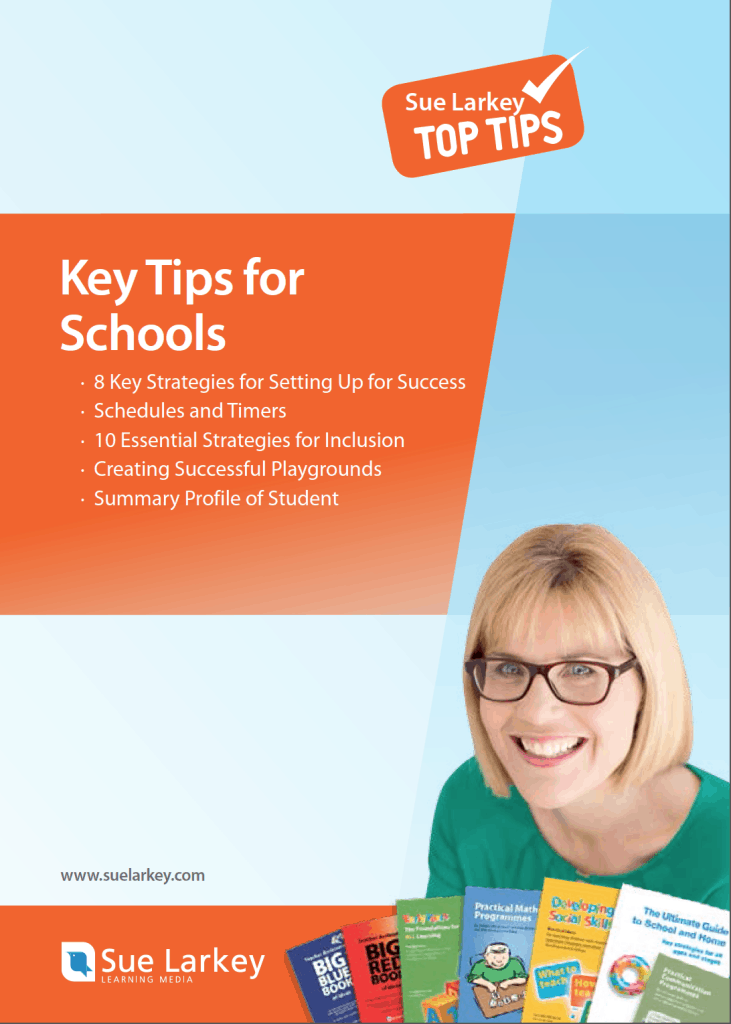Content of E-Book
8 Key Strategies for Setting Up for Success
If you have a student on the autism spectrum no matter what age there a few KEY strategies that will make a huge
difference and set both you and the student up for success.
S.P.E.C.T.R.U.M
Schedules
Have a visual timetable up in the classroom. If there is going to be a change, let the student know in advance and indicate on the timetable/schedule.
Processing Time
Allow them time to process information (both verbal and visual) before you repeat instructions, questions or take away visual information.
SEt up for Success
Most students on the spectrum have a huge fear of failure and this can be seen as “perfectionism”, “constant rubbing out/crossing out work” or “doing NO work”. Discuss the importance of making mistakes”. Talking about mistakes
= learning, and encouraging ALL students to have a go, will help reduce anxiety. Role model making mistakes on the board, show students work that isn’t “perfect”, not the neatest, has crossed out work and incorrect answers will reinforce you are happy with mistakes.
Communication
Limit instructions, use monotone voice, name at start of sentence, remember they are literal. Instead of saying “Can you sit down”, say “Jack sit on the green chair”. Instead of “Do you want to join the class”, say “Jack come and sit next to me”, etc. If you raise your voice this can cause a sensory meltdown and most students on the spectrum can’t process high frequency sounds.
Timeframes
Schedules and timers tell the child HOW LONG and WHEN they are going to have to do an activity. Timers allow
us to pre-warn the child. They help answer many of the questions these children have: What is happening? What order? What time? What is next? How Long?
Repeat Activities
Most people with ASD love repetition, whether it is a DVD, movement, conversation or activity. Giving students repetitive routines and activities helps reduce stress as they know what to expect. Repeating activities allows success, builds independence and increases confidence.
Understanding
Most students on the spectrum are VISUAL learners. Sometimes they can repeat exactly what you said but do not understand. The more visuals you use, the higher the understanding.
Motivate/Reward
Use their “favourite” activities to motivate them. It is best to use lots of short rewards rather than waiting a whole day. I have found the most effective is a quick activity, then quick reward. For example: 30 minutes work, 5 minutes building rather than work all day = 20 minutes building.
For Another 32 Tips & Strategies Download My Free E-Book




 Sorry we no longer ship items outside Australia. Please consider the digital versions of Sue’s Books –
Sorry we no longer ship items outside Australia. Please consider the digital versions of Sue’s Books – 